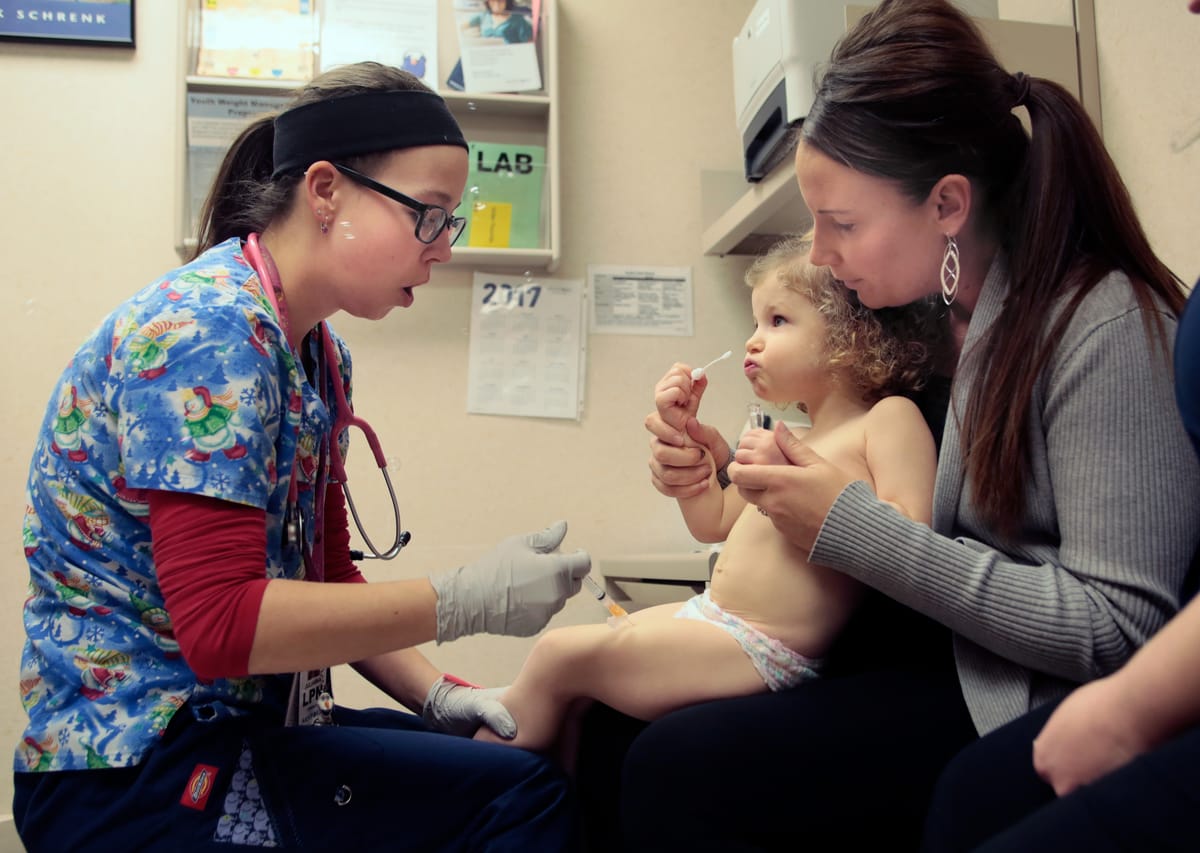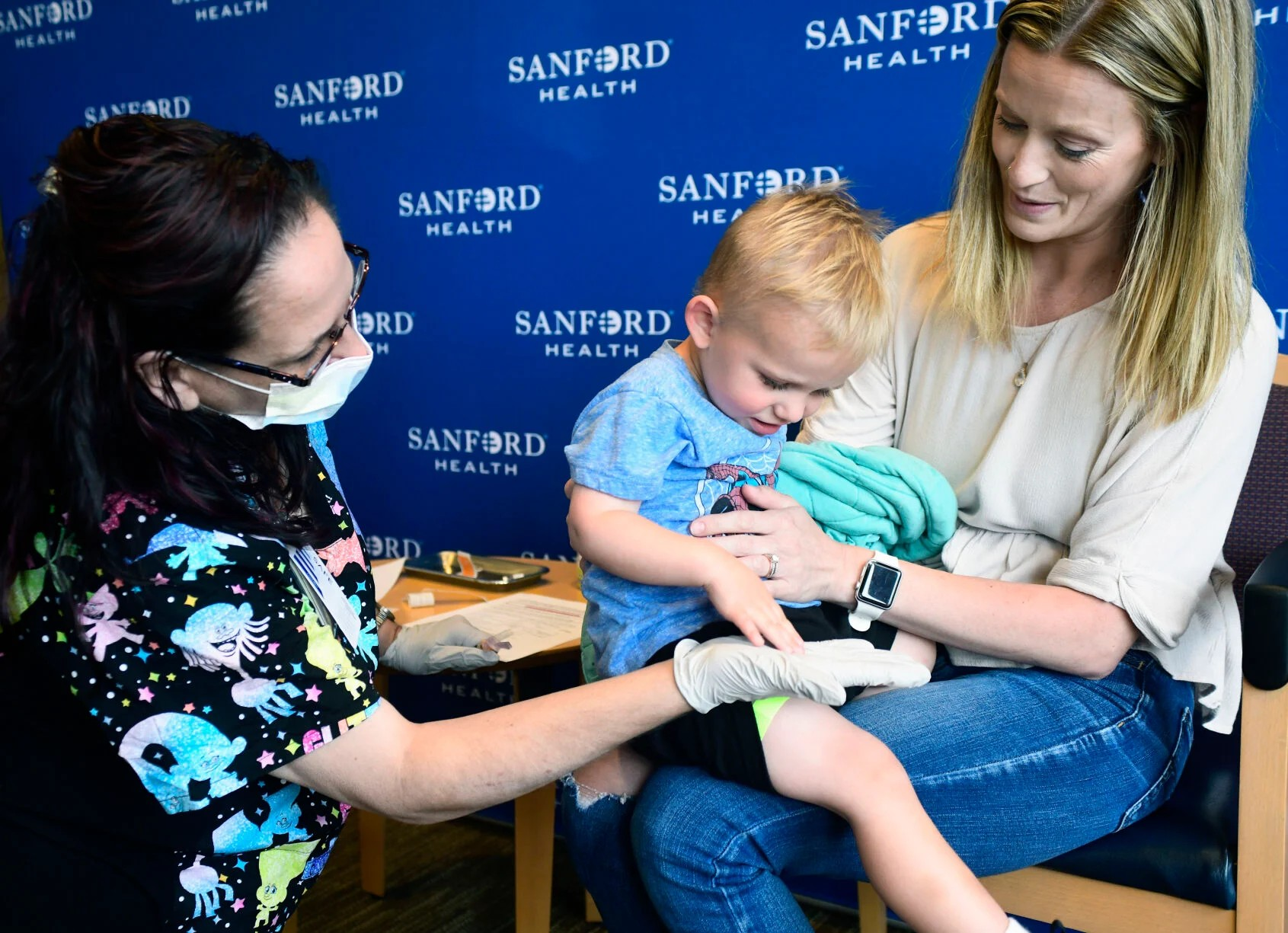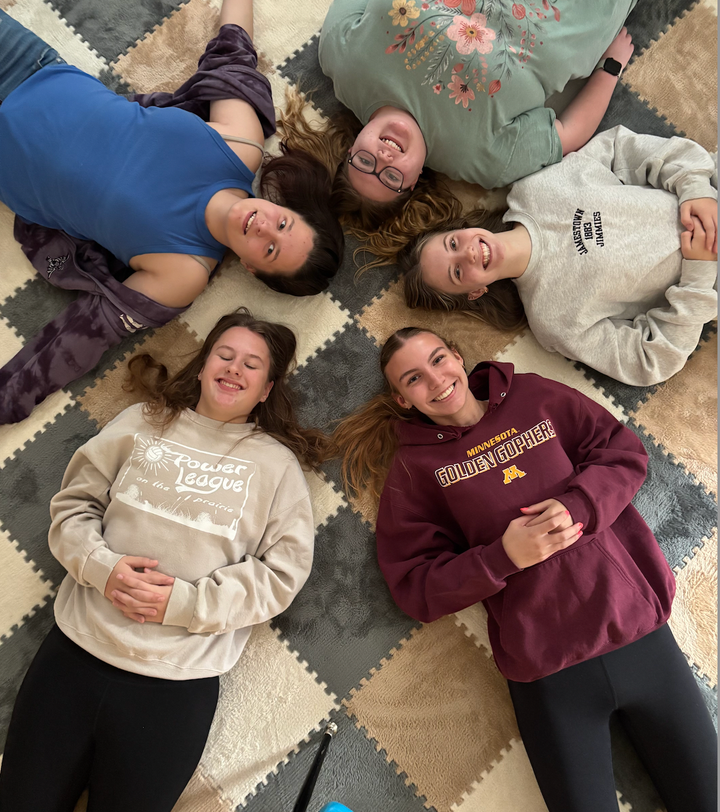North Dakota reports first four measles cases amid declining vaccination rates
Large outbreak could burden local healthcare

Update on 5/5/2025: The Department of Health and Human Services has now confirmed three additional cases in Williams County, bringing the total number of current cases to four.
Manitoba province is also reporting 10 confirmed and 4 probable measles cases, along with information about potential exposure locations. Most of these are in the south close to the border with North Dakota.
With North Dakota reporting its first measles case since 2011 on May 2, local health authorities are bracing for further spread as outbreaks of the highly infectious disease increase across the country.
The case appeared in an unvaccinated child in Williams County who authorities believe contracted the disease from an out-of-state visitor.
North Dakota health authorities state the child is being isolated at home to contain the spread of the virus and are attempting to trace anyone unvaccinated who has been in contact with the child.
As of May 2, the Centers for Disease Control confirmed 935 measles cases, up from 884 known cases a week before. A total of 121 people have been hospitalized nationwide with 3 deaths confirmed.
Now that Minnesota and Montana have confirmed cases, it is only a matter of time – or one plane ride away – for cases to appear in North Dakota, health experts say.
“That’s a term we’re using a lot right now, one plane ride away, whether they’re coming from overseas where there’s a lot of measles, or Texas,” said Kylie Hall, operations director of the North Dakota State University Department of Public Health Center for Immunization Research and Education (CIRE) in Fargo.
Besides Texas, with the majority of cases at nearly 700, outbreak clusters have sprouted in New Mexico, Ohio, Kansas, Indiana and Michigan.
What worries local healthcare providers and officials about the current nationwide spread is it comes at a time when vaccination rates have declined for infants and kindergarteners to a point where community spread will likely occur.
Declining vaccination rates
Current North Dakota kindergartener rates of MMR vaccination, which protects against measles, mumps and rubella, have declined from a 2019-2020 high of 94.75% down to a current 89.98% rate.
For comparison, the latest coverage rates in Texas where the largest outbreak is centered were at 94.35%, higher than North Dakota’s current rate.
Having a rate at or close to 95% provides for “herd immunity,” according to healthcare providers, and numbers below that create stronger conditions for community spread.
“We have truly no chance of hitting our 95% goal for measles right now,” said Jenny Galbraith, adult immunization manager at the North Dakota Department of Health and Human Services.
“Measles is our most infectious disease that we have to deal with day to day, and if you’re an unvaccinated individual who comes into contact with someone with measles you have a 90% chance of turning around and getting measles yourself,” Galbraith said.
Infants between 19 and 35 months of age currently have an 80.9% MMR vaccination rate in the state, a figure that slightly declined from an 81.4 percent rate in early 2022.

“What's really sad about it is, I think because of the power of immunization, we have a society of parents and people in general who don't remember what vaccine preventable diseases look like and how horrible they are, and they take lives and change lives,” said Dr. Joan Connell, a pediatrician at the UND Center for Family Medicine in Bismarck.
Spread could be particularly problematic in pockets of North Dakota where MMR vaccination rates for children at kindergarten age are much lower than average.
Sheridan County has the lowest MMR vaccination rate at around 57%, followed by 59% in Grant, 66% in Billings, 70% in McKenzie, and 70% in Logan counties.
The highest measles vaccination rates are in the northeastern part of the state and include Steele and Benson, with 100% coverage.
Populous counties like Cass, Burleigh and Grand Forks counties are all below herd immunity status with 92%, 88% and 91% of kindergarteners vaccinated in those localities.
Hall said both the lower vaccination rates and the amount of measles spreading in the country have increased concern, a departure from a year ago when rates were about the same but cases were limited.
“Now we’re at the point where we have multiple outbreaks of uncontrolled spread of the disease,” Hall said. “Really, it’s just a matter of time before we see a case.”
Since measles is known to spread through the air and can remain in a room and on surfaces for up to two hours, sometimes even traveling between floors through ventilation systems, one concern is that clinics that do not have negative pressure rooms to isolate cases could facilitate the spread.
“Most clinics don't have a negative pressure room,” Galbraith said.
Hospitals in the state have 238 negative pressure rooms, she said, but the data doesn’t distinguish between adult and pediatric negative pressure rooms.
“There are likely very few of those in our state,” she said of pediatric negative pressure rooms.
Getting patients who display signs of measles isolated quickly is key to limit spread, since a room would need to be sealed off for at least two hours before someone can go back in and sterilize it, she said.
Catching those cases could be difficult, however.
“A lot of times kids affected with measles don’t develop the rash until typically like day four,” Hall said.
Those kids might have coughs, runny nose, red eyes or symptoms of a typical respiratory disease, and be brought into a clinic not knowing they have measles, potentially infecting others who are unvaccinated in the clinic at the same time, she said.
Hall is also concerned about hospital capacity and the lack of negative pressure rooms, particularly in a pediatric setting.
“Because it's airborne, the air in that room cannot be shared with other patients. So you need specific types of rooms,” Hall said. “Even if it was 10 or 20 cases, you know, in a short time, you might need two, three, four or five of those rooms at any given time.”
Galbraith said her department is working with local health care providers to remind people who are not up to date on their measles vaccinations to do so, as well as discussing plans for what to do if a measles case comes into their clinic.
“It's really infectious, so even if someone going into like a waiting room can wreak havoc, get a lot of people sick,” she said. “So we’re preparing for the possibility, in hopes that even if we do have a case introduced, we can really minimize it, and we won't end up in a Texas situation where it really seems to be spreading out of control.”
Vaccine skepticism rises
An uptick in vaccine skepticism following the Covid pandemic as well as more vocal opponents of vaccines are widely seen as the reason for the decline.
Those declining to have children vaccinated for personal or religious beliefs in North Dakota have also increased.
Personal belief exemptions increased from 1.2 per 100 children in 2011-2012 up to a current 4.36 rate. Religious exemptions – which were nearly zero in 2011-2012 – have also risen to a rate of 2.36 out of 100.
A poll from leading healthcare information provider KFF released April 23 found a 15% increase over the past year in the number of adults reporting to have heard or read false claims that measles vaccination is more dangerous than being infected by measles.
The KFF poll also found an increasing number of people are confused about the false claim that MMR vaccines were proven to cause autism, with at least half of adults polled expressing some uncertainty.
Dr. Faisal Siddiqui, a pediatrician at St. Alexius Health Neonatal Clinic in Bismarck, said he believes some of the anti-vaccination messages get spread through social media and kind of overwhelm the message that vaccinations for something like measles actually work.
“We see a lot of parents who end up coming to us with refusals, but if you give them the proper education, appropriate resources, good data and point them towards data that is authentic, real and scientifically proven, most of them end up changing their thoughts and we are able to get them vaccinated,” Siddiqui said.
Connell said she hoped parents could become more well versed on interpreting medical literature and understanding what are quality studies and what are not.
“I think what we’re seeing is these low-quality studies, with a low number of patients, and low validity, and people are taking the conclusions of those and making major healthcare decisions,” Connell said.
“They’ve been able to do that because their kids aren’t dying from vaccine preventable diseases or losing their sight or hearing, but that is going to change,” Connell said. “It’s just very sad for me, I never thought that at the twilight of my career I’d be seeing more sickness in kids, and that’s a reality for me now.”
A Stanford University study published in the leading medical journal JAMA predicted that measles could become endemic over the next 25 years if the current declining vaccination rates continue, leading to hundreds of thousands of cases nationwide.
A decline of 10 percent more in MRR vaccinations could lead to millions of cases, the study found.
“Every parent wants to be able to say that they did the very best that they could for their child,” Connell said. “My heart just already bleeds for those parents who made decisions to not vaccinate based on a poorly constructed case report that they put all their weight and belief in.”
The North Dakota News Cooperative is a nonprofit news organization providing reliable and independent reporting on issues and events that impact the lives of North Dakotans. The organization increases the public’s access to quality journalism and advances news literacy across the state. For more information about NDNC or to make a charitable contribution, please visit newscoopnd.org. Send comments, suggestions or tips to michael@newscoopnd.org. Follow us on Twitter: https://twitter.com/NDNewsCoop.



